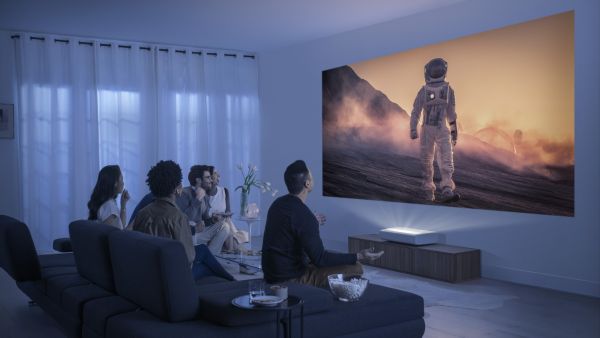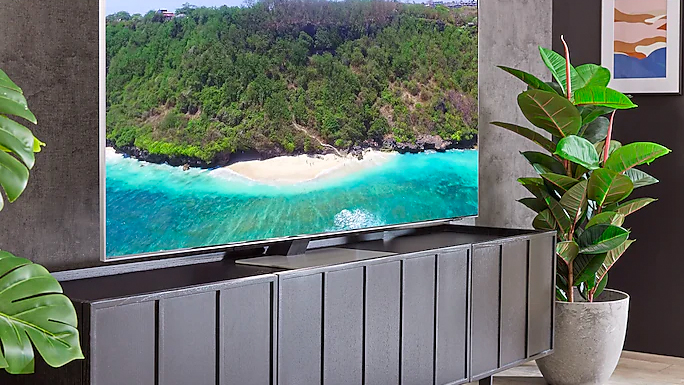Are the best TVs and projectors jumping the gun on 4K?
Alas, HD, I knew thee well

These days, the best TVs and projectors offer 4K resolution – the picture technology that packs in eight million pixels worth of detail into a single display. In fact, most new TVs and projectors do. So it’s odd that, this far into the lifespan of 4K images, we’re having to question whether some manufacturers are being too quick to leave lower resolutions behind.
It’s even more peculiar that we have to do so while even higher 8K resolutions are striding into the market, with 8K TVs coming from various corners (Samsung, LG, TCL) and changing expectations for truly premium televisions.
It’s not that we want to cling to our HD devices, or hold back the tide of 4K content accumulating on streaming services like Netflix, or 4K Blu rays for blockbuster films. 4K is a great technology – it adds in an incredible amount of detail compared to older and lower resolutions like SD and HD.
The problem is that, sometimes, 4K-capable hardware prioritises 4K performance over SD and HD viewing.
We’ve seen this in numerous devices over the past few years, but it’s somehow still apparent in 2021, with TV brands pushing screens with 4K capabilities that look good with Ultra HD Marvel movies, but struggle with a home box set of Black Books, a streaming session of Gilmore Girls, or even modern-day broadcasts on HD channels.
The problem with 4K
So why do TVs and projectors struggle with lower resolution content? Shouldn’t this be easier?
Any TV display will feature a certain number of pixels. If the video source or broadcast has the same number of pixels, it overlaps perfectly. If the video source has fewer pixels than the display, though, then the TV’s processor essentially needs to create visual data for the remaining pixels in a process called ‘upscaling’.
Sign up for breaking news, reviews, opinion, top tech deals, and more.
Full HD content needs around two million pixels, but a 4K TV has eight million. That means a 4K TV needs an additional six million pixels that isn’t provided from the content source, with the majority of the picture being fabricated on the fly by picture algorithms.
Watching regular HD content (a bit shy of one million pixels) or SD content (around 350,000) makes that problem even worse. SD video on a 4K TV only fills a minute fraction of the screen’s pixel count, so it needs some serious heavy lifting from the TV’s processor to look good.
Good upscaling is crucial for a 4K TV, and it’s very noticeable when manufacturers neglect it, or the included picture processor struggles.

The problem with 4K hardware
We recently reviewed the XGIMI Horizon Pro, the company’s first 4K HDR projector, and saw in stark terms just how much performance varied between resolutions.
We wrote that “SD and HD upscaling really isn’t very impressive, with on/off grain, image artefacts, and color distortion creeping in when you’re not feeding the Horizon Pro quality sources. As XGIMI’s first luxury projector range, this misstep is understandable, and this won’t be a deal-breaker for all – especially those relying on 4K sources – but it does tarnish what other might have been a five-star projector.”
Outside of a very small handful of users, who might be particular enough to only bother using a TV or projector to watch 4K content, the outcome is disappointing – effectively selling a piece of hardware on the basis of the latest specifications while scorning the everyday resolutions that still make up the majority of broadcast or streamed TV. Giving with one hand, taking away with the other.
This isn’t the case across the board, of course. TV brands like Samsung and Sony offer largely excellent upscaling across their TV ranges, ensuring that SD and HD content isn’t distorted by sub-par processing, and is given fill-in detail for the millions of pixels left over on a 4K screen.
Our senior home entertainment editor, Nick Pino, tells us that “some brands are simply better than others when it comes to upscaling HD (or even sub-HD) content into 4K resolution. Companies like Samsung, Sony and LG have devoted millions of dollars into the research and development of both specific processors that are capable of numerically challenging computations as well as smarter upscaling algorithms for frame-by-frame upscaling.
"Poor upscaling processes results in images that are grainy and less detailed, while properly upscaled images will look cleaner with nearly as much detail as native 4K content.”

A TV or projector won’t live and die by its upscaling prowess alone, of course. These problems persist in varying degrees across the ranges of today’s electronics companies, and for any purchase we need to consider potential upscaling deficiencies alongside other picture metrics – smooth motion, color accuracy, brightness control, contrast, and the like – as well as the usability of a screen’s interface and the quality of the speakers that are built in (if any).
But as 4K becomes the standard, it’s easy to start losing focus of legacy resolutions that are still very common both for new programming and re-runs of old series and shows. It wasn’t until 2021 that Now (formerly Now TV) revealed plans for 4K streaming on its service, after all.
While brand new Netflix Originals will launch in 4K, plenty of older content on the platform doesn’t reach those heights, and it’s a similar situation across all the major streaming services – not to mention TV channels that have yet to make the jump to Ultra HD resolution.
There may soon come a time when SD content, or even HD content, has all but disappeared from our lives, as we embrace ever-higher resolutions. For now, though, we really need hardware that doesn’t focus so much on realizing 4K that it neglects the resolutions that preceded it.
- Check out the best projectors and best outdoor projectors out there

Henry is a freelance technology journalist, and former News & Features Editor for TechRadar, where he specialized in home entertainment gadgets such as TVs, projectors, soundbars, and smart speakers. Other bylines include Edge, T3, iMore, GamesRadar, NBC News, Healthline, and The Times.